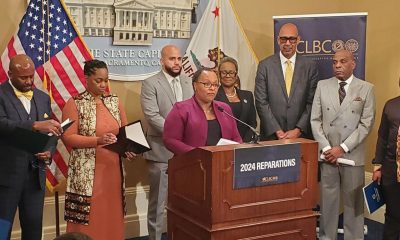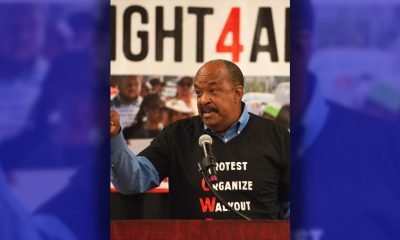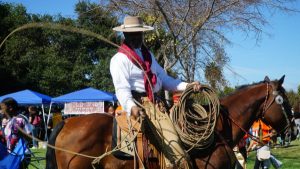History
What Reparations for Slavery Might Look Like in 2019
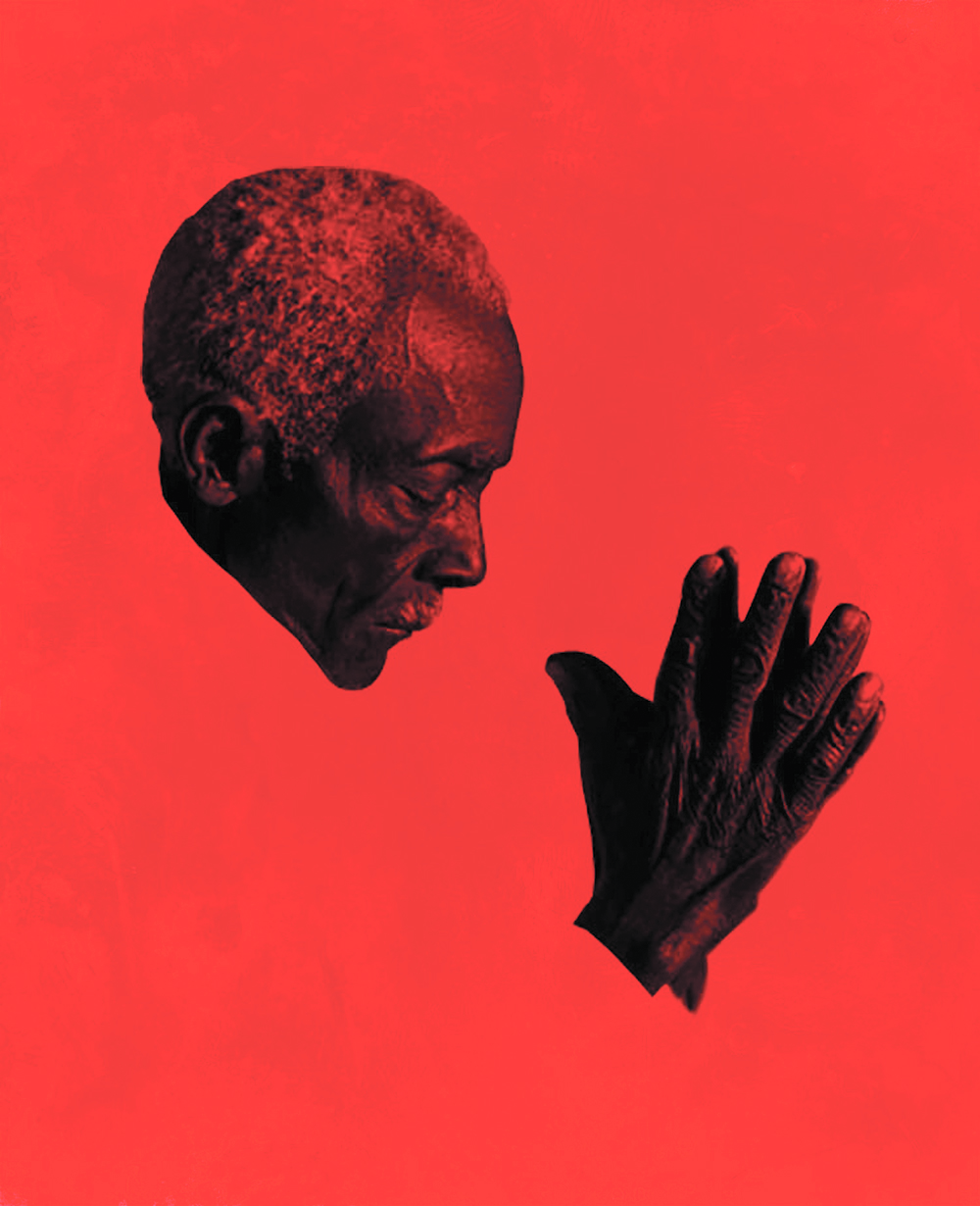
Another civil rights leader, Bayard Rustin, responded, “If my great-grandfather picked cotton for 50 years, then he may deserve some money, but he’s dead and gone and nobody owes me anything.”
The question of reparations, however, extends far beyond the roughly four million people who were enslaved when the Civil War started, as Ta-Nehisi Coates explained in an influential essay published in The Atlantic in 2014. Legalized discrimination and state-sanctioned brutality, murder, dispossession and disenfranchisement continued long after the war ended. That history profoundly handicapped black Americans’ ability to create and accumulate wealth as well as to gain access to jobs, housing, education and health care.
For every dollar a typical white household holds, a Black one has 10 cents. It is this cumulative effect that justifies the payment of reparations to descendants of slaves long dead, supporters say.
“Equality is not likely to be obtained without some form of reparations,” David H. Swinton, an economist and former president of Benedict College, wrote in the 1990 collection “The Wealth of Races.”
Who would be paid?
Nearly 47 million Americans identified themselves as Black or African-American in the latest census. A vast majority are descended from slaves, but others are more recent migrants. So who would qualify for a payment?
William A. Darity Jr., an economist at Duke University and a leading scholar on reparations, suggests two qualifying conditions: having at least one ancestor who was enslaved in the United States, and having identified oneself as African-American on a legal document for at least a decade before the approval of any reparations. The 10-year rule, he said, would help screen out anyone trying to cash in on a windfall.
According to these criteria, Oprah Winfrey, who has traced her DNA to slaves captured in West Africa in the early 19th century, would qualify. Former President Barack Obama, the son of a white American mother and a Kenyan father, would not. Mr. Darity estimates that roughly 30 million Americans would be eligible.
Tracing genealogy back to the slave-owning era is difficult. But the search begins by comparing the 1870 census, when freed slaves were first counted by name, with the one taken in 1860, when they weren’t. Other sources include military service and pension records, slave-ship manifests, and estate and inheritance documents.
As for taking account of current wealth, a reparations program could link potential payouts to income and asset levels.
How much would recipients get?
Attaching a dollar figure to a program of reparations resembles a “Wheel of Fortune” spin, with amounts ranging from the piddling ($71.08 per recipient under Forman’s plan) to the astronomical ($17 trillion in total).
Over the decades, some economists have tried to come up with a quantifiable basis for a fair sum. Mr. Swinton, for example, estimated in 1983 that 40 to 60 percent of the difference between Black and white income could be attributed to past and continuing discrimination, and put the figure at $500 billion.
Some economists evaluated labor’s share of the slave system’s profits in cotton and tobacco. Others have looked at what slaves would have earned if they had been paid wages plus interest, after subtracting housing and food costs. One study looked at 20th-century statistics, estimating how much less blacks earned because of decades of discrimination. Another examined the value of black wealth lost or destroyed after slavery ended, through practices like redlining that denied lending or insurance to African-American communities, or organized riots like the 1921 rampage that leveled the Greenwood neighborhood of Tulsa, known as “Black Wall Street.”
A recurring theme has been to return to that first official action promising 40 acres and a mule. Sherman drew up his order after posing this directive to a group of black ministers and leaders: “State in what manner you think you can take care of yourselves.”
What would Sherman’s promise be worth today?
Mr. Darity has been mulling that question for years, and is writing a book on reparations with Kirsten Mullen, due out next year. He begins with the cost of an acre in 1865: about $10. Forty acres divided among a family of four comes to 10 acres per person, or about $100 for each of the four million former slaves. Taking account of compounding interest and inflation, Mr. Darity has put the present value at $2.6 trillion. Assuming roughly 30 million descendants of ex-slaves, he concluded it worked out to about $80,000 a person.
To get a sense of the scale, consider that the United States budget this year is $4.7 trillion.
Of course, varying any critical assumption can add or subtract billions or trillions of dollars.
Thomas Craemer, an associate professor of public policy at the University of Connecticut, used the same starting point — 40 acres and a mule — but a different method in a study published last year. He used the current average price of agricultural land and figured that 40 acres of farmland and buildings would amount to roughly $123,000. If all of the four million slaves counted in the 1860 census had been able to take advantage of that offer, it would have totaled more than $486 billion today — or about $16,200 for each descendant of slaves.
What form would payment take?
Compensation programs can take many forms. In the United States, after a congressional study, people of Japanese descent who were forced into internment camps during World War II received $20,000 in 1988 and a formal apology.
Since 1952, Germany has paid more than $70 billion in reparations through various programs, primarily to Jewish victims of the Nazi regime, and continues to deliver hundreds of millions of dollars each year. Payments vary from a lump sum distributed to individuals to a monthly pension based on years working in a slave labor camp. Money is also given to organizations to cover home care for older survivors or for grants. A small portion goes for research, education and documentation.
A reparations program in the United States could likewise adopt a single method or several at once. Families could get a one-time check, receive vouchers for medical insurance or college, or have access to a trust fund to finance a business or a home. Mr. Darity argues that “for both substantive and symbolic reasons, some important component must be direct payment to eligible recipients.”
Other scholars have emphasized different features. Roy L. Brooks, a law professor at the University of San Diego and the author of “Atonement and Forgiveness: A New Model for Black Reparations,” has reservations about what he calls the “settlement model,” a legalistic approach that looks backward to compensate victims for demonstrable financial losses. He prefers what he calls the “atonement model,” emphasizing longer-term investments in education, housing and businesses that build up wealth.
What would the economic impact be?
According to the Federal Reserve’s Survey of Consumer Finances, the median wealth of black households is $16,000, compared with $163,000 for whites. Reparations are not likely to eliminate the racial wealth gap, but could narrow it somewhat. Low-income families, with the fewest assets, would benefit the most.
The biggest economic objection is that any meaningful program would be unaffordable. Like other government spending, reparations would ultimately be paid for by some kind of tax or fee, or borrowing, say, through government bonds. Such a program would almost certainly require increasing the federal debt and be structured over time.
Those less worried about a growing deficit could argue that reparations would be a boon over the long run — lifting people out of poverty, and improving their earning potential and buying power.
Bay Area
BART to Retire Legacy Trains in Public Ceremony April 20

The Richmond Standard
Bay Area Rapid Transit’s final dispatch of legacy trains will take place on Saturday, April 20, and will be accompanied by a retirement ceremony and a final legacy ride.
At 1 p.m., the public is invited to celebrate the last run of BART’s legacy trains during a ceremony that will take place in the free area of the plaza at MacArthur Station in Oakland.
Following the ceremony, the public is invited to board a legacy train and ride from MacArthur to Fremont Station, mirroring the initial service BART provided when it opened Sept. 11, 1972.
“It’s a 45-minute trip that travels along approximately 24 miles of the original section of tracks,” BART officials said.
Multiple legacy trains will run for the event, and all will make station stops and may turn around at Bay Fair depending on the number of attendees waiting to ride. Regular fares will apply.
“These train cars are part of the history of the Bay Area,” said Bob Powers, BART general manager. “While we are excited to modernize the system, we recognize the profound cultural importance of these cars, and we want to celebrate their rich history and give them a proper send off.”
BART is now running train cars from its Fleet of the Future project.
Those nostalgic for the older trains will be able to view three of them soon at Western Railway Museum in Suisun City.
A handful of other legacy cars will be transferred to be repurposed for short-term rentals, entertainment venues, and training facilities, according to BART. Most of the legacy cars have been recycled.
Activism
Oakland Schools Honor Fred Korematsu Day of Civil Liberties
Every Jan. 30, OUSD commemorates the legacy of Fred Korematsu, an Oakland native, a Castlemont High School graduate, and a national symbol of resistance, resilience, and justice. His defiant stand against racial injustice and his unwavering commitment to civil rights continue to inspire the local community and the nation. Tuesday was “Fred Korematsu Day of Civil Liberties and the Constitution” in the state of California and a growing number of states across the country.
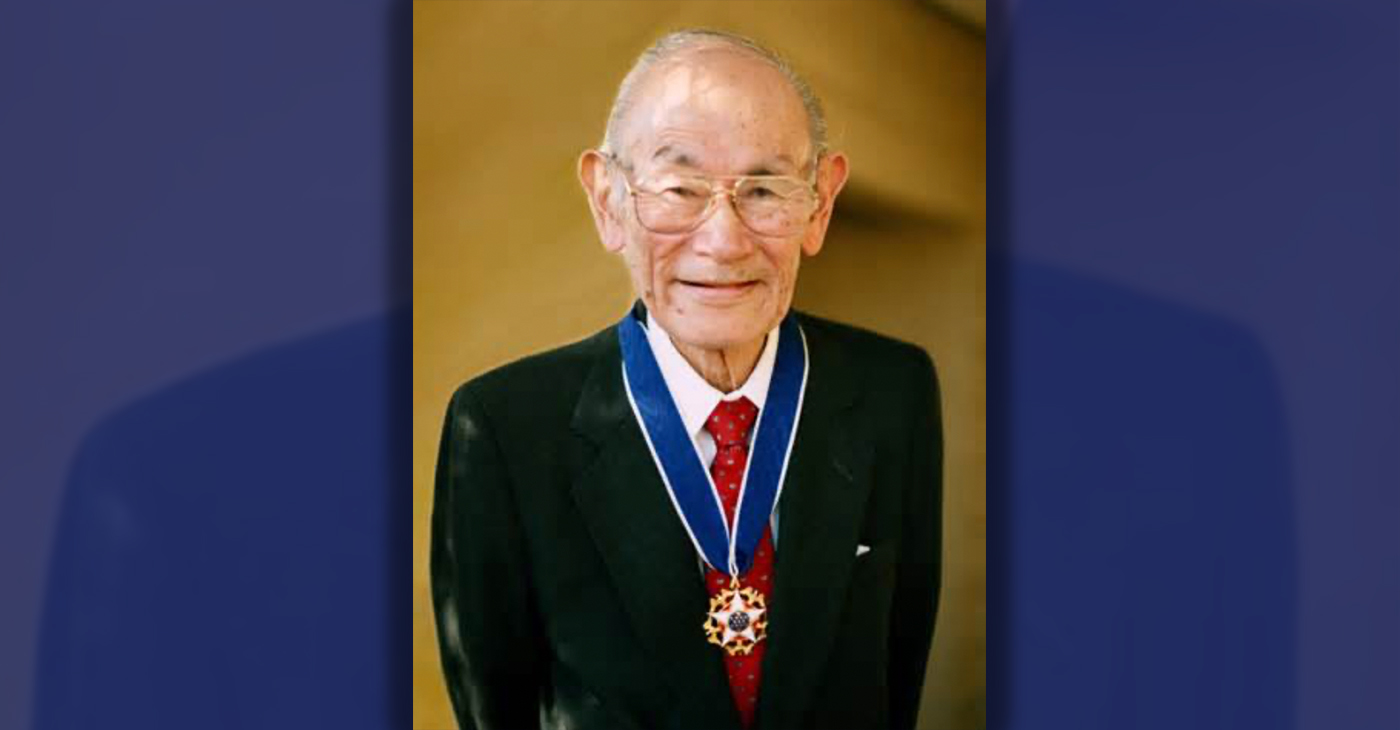
By Post Staff
Every Jan. 30, OUSD commemorates the legacy of Fred Korematsu, an Oakland native, a Castlemont High School graduate, and a national symbol of resistance, resilience, and justice.
His defiant stand against racial injustice and his unwavering commitment to civil rights continue to inspire the local community and the nation. Tuesday was “Fred Korematsu Day of Civil Liberties and the Constitution” in the state of California and a growing number of states across the country.
One OUSD school is named in his honor: Fred T. Korematsu Discovery Academy (KDA) elementary in East Oakland.
Several years ago, founding KDA Principal Charles Wilson, in a video interview with anti-hate organization “Not In Our Town,” said, “We chose the name Fred Korematsu because we really felt like the attributes that he showed in his work are things that the children need to learn … that common people can stand up and make differences in a large number of people’s lives.”
Fred Korematsu was born in Oakland on Jan. 30, 1919. His parents ran a floral nursery business, and his upbringing in Oakland shaped his worldview. His belief in the importance of standing up for your rights and the rights of others, regardless of race or background, was the foundation for his activism against racial prejudice and for the rights of Japanese Americans during World War II.
At the start of the war, Korematsu was turned away from enlisting in the National Guard and the Coast Guard because of his race. He trained as a welder, working at the docks in Oakland, but was fired after the bombing of Pearl Harbor in 1941. Fear and prejudice led to federal Executive Order 9066, which forced more than 120,000 Japanese Americans out of their homes and neighborhoods and into remote internment camps.
The 23-year-old Korematsu resisted the order. He underwent cosmetic surgery and assumed a false identity, choosing freedom over unjust imprisonment. His later arrest and conviction sparked a legal battle that would challenge the foundation of civil liberties in America.
Korematsu’s fight culminated in the Supreme Court’s initial ruling against him in 1944. He spent years in a Utah internment camp with his family, followed by time living in Salt Lake City where he was dogged by racism.
In 1976, President Gerald Ford overturned Executive Order 9066. Seven years later, the 9th Circuit Court of Appeals in San Francisco vacated Korematsu’s conviction. He said in court, “I would like to see the government admit that they were wrong and do something about it so this will never happen again to any American citizen of any race, creed, or color.”
Korematsu’s dedication and determination established him as a national icon of civil rights and social justice. He advocated for justice with Rosa Parks. In 1998, President Bill Clinton gave him the Presidential Medal of Freedom saying, “In the long history of our country’s constant search for justice, some names of ordinary citizens stand for millions of souls … To that distinguished list, today we add the name of Fred Korematsu.”
After Sept. 11, 2001, Korematsu spoke out against hatred and discrimination, saying what happened to Japanese Americans should not happen to people of Middle Eastern descent.
Korematsu’s roots in Oakland and his education in OUSD are a source of great pride for the city, according to the school district. His most famous quote, which is on the Korematsu elementary school mural, is as relevant now as ever, “If you have the feeling that something is wrong, don’t be afraid to speak up.”
Black History
Matthew Henson: Explorer Extraordinaire
Matthew Henson, a trailblazing explorer who overcame countless obstacles to leave an incredible mark on history. Born on August 8, 1866, in Charles County, Maryland, his journey is a testament to the power of determination and the spirit of adventure.

By Tamara Shiloh
Matthew Henson, a trailblazing explorer who overcame countless obstacles to leave an incredible mark on history. Born on August 8, 1866, in Charles County, Maryland, his journey is a testament to the power of determination and the spirit of adventure.
Henson’s life began amidst the backdrop of post-Civil War America, where opportunities for African Americans were scarce. From a young age, he possessed an insatiable curiosity about the world beyond his small town. At the age of 12, he embarked on a journey that would change the course of his life forever when he joined a merchant ship as a cabin boy.
His most famous expedition was his journey to the Arctic with renowned explorer Robert E. Peary. In 1887, Henson joined Peary’s crew as a seaman and quickly proved himself to be invaluable with his skills as a navigator and craftsman. Over the course of several expeditions, Matthew endured extreme cold, treacherous terrain, and grueling conditions as he and Peary sought to reach the elusive North Pole.
In 1908–09, Peary set out on his eighth attempt to reach the North Pole. It was a big expedition, with Peary planning to leave supplies along the way. When he and Henson boarded their ship, the Roosevelt, leaving Greenland on August 18, 1909, they were joined by a large group. This included 22 Inuit men, 17 Inuit women, 10 children, 246 dogs, 70 tons of whale meat, blubber from 50 walruses, hunting gear, and tons of coal.
In February, Henson and Peary left their anchored ship at Ellesmere Island’s Cape Sheridan, along with the Inuit men and 130 dogs. They worked together to set up a trail and supplies along the way to the Pole.
Peary picked Henson and four Inuit people to join him in the final push to the Pole. However, before they reached their destination, Peary couldn’t walk anymore and had to ride in a dog sled. He sent Henson ahead to scout the way. In a later interview with a newspaper, Henson recalled being in the lead and realizing they had gone too far. The group turned back, and Henson noticed his footprints helped guide them to their destination. At that location, Henson planted the American flag.
Henson’s legacy extends far beyond his expeditions to the Arctic. He shattered racial barriers in the world of exploration and inspired countless individuals, regardless of race, to dream big and pursue their passions. In 1937, he was finally recognized for his achievements when he was inducted into The Explorers Club, an organization dedicated to promoting scientific exploration and field research.
Matthew Henson died in the Bronx, New York, on March 9, 1955, at the age of 88.
-

 Activism4 weeks ago
Activism4 weeks agoOakland Post: Week of March 27 – April 2, 2024
-

 #NNPA BlackPress4 weeks ago
#NNPA BlackPress4 weeks agoBeloved Actor and Activist Louis Cameron Gossett Jr. Dies at 87
-

 Community2 weeks ago
Community2 weeks agoFinancial Assistance Bill for Descendants of Enslaved Persons to Help Them Purchase, Own, or Maintain a Home
-

 Activism3 weeks ago
Activism3 weeks agoOakland Post: Week of April 3 – 6, 2024
-

 Business2 weeks ago
Business2 weeks agoV.P. Kamala Harris: Americans With Criminal Records Will Soon Be Eligible for SBA Loans
-

 Activism2 weeks ago
Activism2 weeks agoOakland Post: Week of April 10 – 16, 2024
-

 Community2 weeks ago
Community2 weeks agoAG Bonta Says Oakland School Leaders Should Comply with State Laws to Avoid ‘Disparate Harm’ When Closing or Merging Schools
-

 Community1 week ago
Community1 week agoOakland WNBA Player to be Inducted Into Hall of Fame




